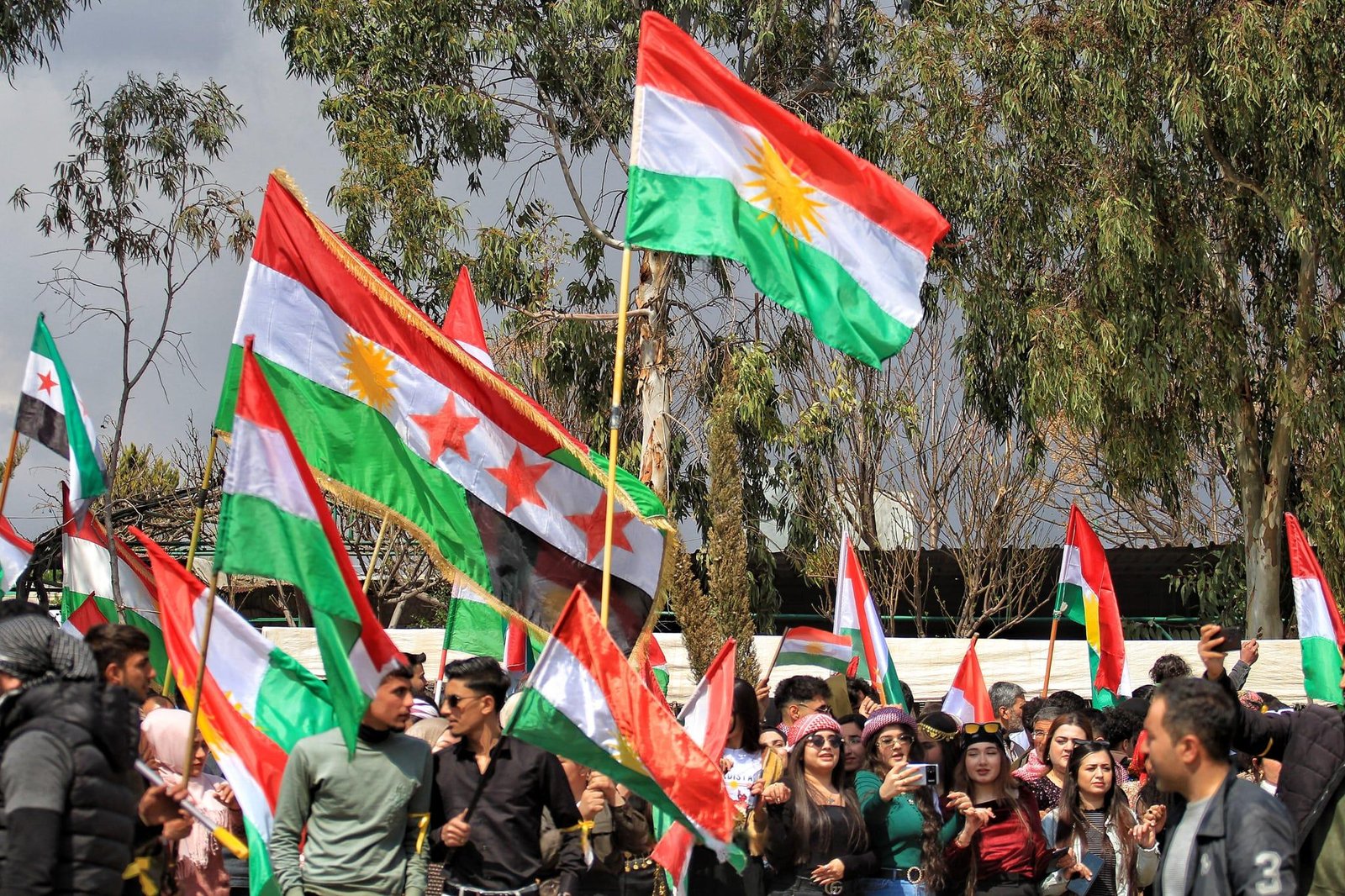What Kurdish Flags Reveal About Newroz Celebrations in Syria

For the first time in decades, Kurds were permitted to celebrate Newroz publicly throughout much of Syria, including Damascus. While Newroz celebrations have been commonplace in areas controlled by the Syrian Democratic Forces (SDF), this marks the first time such celebrations have occurred elsewhere in Syria following the fall of Assad’s regime.
One of the most striking differences between Newroz celebrations inside SDF-held areas and those outside their control—in places like Damascus and Afrin—is the choice of flags being raised. This distinction is not just symbolic; it is deeply political and offers insight into the broader ideological affiliations of Kurdish communities across Syria.
In areas outside SDF control such as Damascus and Afrin, where dozens of celebrations occurred across different districts—many appearing spontaneous or loosely organized—the flag predominantly raised and waved was the Kurdistan flag. This flag is officially used by the Kurdistan Region in Iraq, though a similar version has a longer history, having been first adopted by the short-lived Khoybun republic in today’s Turkey in the 1920s and later by the Mahabad Republic in Iran in 1946.
Meanwhile, in SDF-controlled areas, the Kurdistan flag is rarely seen during Newroz celebrations. Instead, the SDF has adopted a different flag known as the Rojava flag, which was initially the flag of TEV-DEM, the political coalition representing the ideology inspired by PKK leader Abdullah Ocalan.


The PKK has long rejected the Kurdistan flag, viewing it exclusively as the flag of the Kurdistan Region of Iraq. The SDF in Syria has adopted a similar stance, with numerous incidents where Kurdistan flags have been forcibly removed from political offices in places like Qamishli. Pro-PKK groups justify this position by claiming that each part of Kurdistan should have its own distinct flag.
However, almost all Syrian Kurdish groups outside the PKK’s ideological sphere have embraced the Kurdistan flag as a unifying symbol. This includes not only pro-Kurdistan Democratic Party (KDP) groups in Syria such as the Kurdish National Council (ENKS), but all political groups operating outside the PKK’s ideological framework. Even many Kurdish groups allied with the pro-PKK Democratic Union Party (PYD) in Syria—which together have established the Kurdish National Unity alliance—recognize the Kurdistan flag.
A notable example is the Kurdish National Alliance in Syria (HNKS), which has aligned with Kurdish National Unity. This coalition primarily consists of center-left parties that cooperate with TEV-DEM but differ on a crucial ideological point: they recognize the Kurdistan Region’s flag as the national Kurdish flag. Unlike PKK-affiliated groups that have adopted the Rojava-specific flag, these parties continue to display the Kurdistan flag and acknowledge it as the national symbol of the Kurdish people. This position places them ideologically closer to ENKS while they maintain active roles in the councils established in northeast Syria.
Syrian Kurdish Political Parties Ideology Meter: Rojava vs Kurdistan Flag Support
This divergence in flag usage offers two possible interpretations: First, areas outside SDF control might provide a more accurate representation of Syrian Kurdish sentiment and political views, particularly as the flag issue serves as an important indicator of broader political alignment in the context of “PKK versus the rest.” Despite a decade of SDF governance in northeast Syria and their promotion of a separate flag intended to represent Syrian Kurds across political divides, it appears that outside SDF authority, a majority do not recognize the Rojava flag as their own, instead identifying with the Kurdistan flag. Alternatively, the limited visibility of the Rojava flag in these areas may be due to practical or political constraints—such as its close association with the PKK or its potential rejection by Syrian authorities. That said, there have been rare instances where the Rojava flag was seen, including in Damascus. Still, the overwhelming majority of flags raised were the Kurdistan flag.
This contrast raises a provocative question: if the Syrian government appears more willing to tolerate the display of the Kurdistan flag—despite its ties to the Kurdistan Region of Iraq—while largely shunning the Rojava flag, does this inadvertently confer a degree of legitimacy on the idea of Kurdish unity across borders? And, in doing so, does it signal an implicit recognition of a broader transnational Kurdish identity that transcends the localized, ideologically driven symbolism of the Rojava flag?
Either way, the flag issue reveals a great deal about the symbolic and political fault lines among Syrian Kurds. While the flying of the Kurdistan flag doesn’t necessarily indicate allegiance to any specific party, it does suggest a rejection of the Rojava flag as the national symbol for Syrian Kurds. The deeper ideological and micro-political beliefs of these people remain unclear, but the symbolism of the flag offers a useful barometer for understanding broader political orientations in the ongoing contest between PKK-aligned and non-aligned Kurdish movements in Syria.









